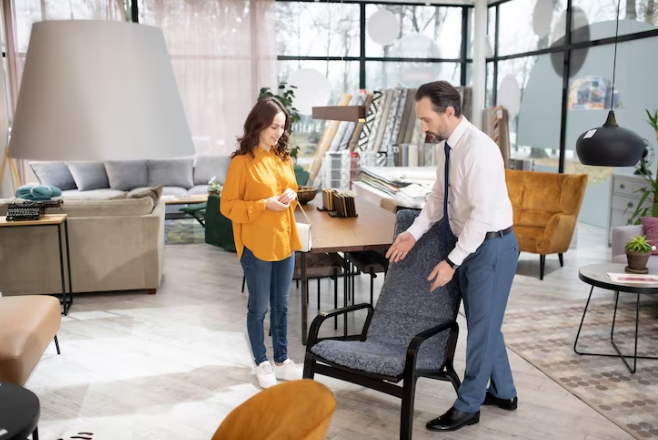Introduction:
- Hook readers with a relatable anecdote or statistic about the power of interior design.
- Briefly explain what interior design is and its impact on functionality, well-being, and aesthetics.
- Highlight the benefits of reading your guide (e.g., gain inspiration, learn key principles, discover design trends).
Subheadings and Key Points:
- Understanding Your Style:
- Guide readers through self-discovery exercises to identify their unique preferences.
- Discuss popular design styles (e.g., minimalist, coastal, mid-century modern) and their characteristics.
- Encourage creating mood boards for visual inspiration.
- Space Planning Fundamentals:
- Explain key space planning principles like scale, proportion, and traffic flow.
- Offer tips for maximizing small spaces and creating designated zones.
- Discuss furniture arrangement strategies for different room functions.
- Color Psychology and Harmony:
- Explore the emotional effects of colors and their influence on mood and productivity.
- Provide basic color theory knowledge (e.g., complementary colors, color schemes).
- Offer guidance on selecting color palettes for various rooms and design styles.
- The Power of Lighting:
- Discuss the different types of lighting (e.g., ambient, task, accent) and their purposes.
- Explain the importance of layering lighting for visual comfort and ambiance.
- Offer tips for choosing light fixtures, bulbs, and dimmers to create desired effects.
- Furniture Selection and Arrangement:
- Guide readers through considerations like scale, functionality, and materiality.
- Suggest furniture layouts for different room types and activities.
- Discuss tips for reupholstering or upcycling existing furniture.
- Accessorizing with Intention:
- Explain how accessories can personalize a space and reflect one’s style.
- Offer tips for selecting artwork, textiles, plants, and other decorative elements.
- Discuss the importance of balance, scale, and cohesion in accessorizing.
- Sustainable Design Solutions:
- Introduce the concept of sustainable design and its benefits for the environment and well-being.
- Provide tips for incorporating eco-friendly materials, furniture, and practices.
- Discuss upcycling, repurposing, and energy-efficient lighting options.
- Bringing it All Together:
- Offer a recap of key design principles and considerations.
- Encourage readers to experiment, have fun, and express their personalities through their spaces.
- Provide additional resources for further learning and inspiration.
Conversational Style Tips:
- Use a friendly and approachable tone, addressing readers directly.
- Share personal anecdotes and experiences to make the content relatable.
- Ask questions to engage readers and encourage their participation.
- Use vivid language and imagery to paint a picture of beautiful spaces.
- Avoid overly technical jargon and explain complex concepts clearly.
Remember, this is just a guide to get you started. Feel free to adjust the content, add your own creative flair, and tailor it to your specific target audience. Good luck with your writing!

